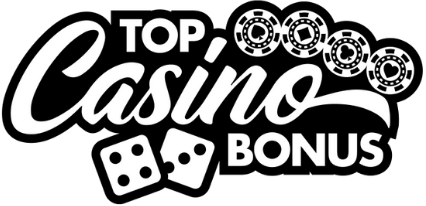Basic blackjack strategy vs. card counting: understanding the leap
In most people’s minds, blackjack boils down to one simple idea: aiming for 21 without going over. But the real game lives under that glossy surface. There’s a fork in the road where most players freeze, stuck between basic strategy and the mythic, misunderstood world of card counting. The truth is, the leap between these two is where careers are made or bankrolls are burned. And too many folks charge ahead without knowing what they’re stepping into.
Table of contents
Understanding basic blackjack strategy
Let’s get something straight, basic strategy isn’t optional. It’s the blueprint for how to act in any given hand, based solely on your cards and the dealer’s upcard. Nothing fancy. This is raw, statistical probability carved down from millions of hands’ worth of data. Think of it like a dependable workhorse, not flashy, but if it’s not doing its job, everything else falls apart.
What most players get wrong
Beginners often treat basic strategy like a suggestion, not a system. I’ve watched countless players “go with their gut” and hit a 14 against a dealer’s 6, that’s just lighting money on fire. If you’re ignoring the chart because you feel “lucky,” you’re not playing blackjack, you’re gambling blind.
A foundational error I see over and over is the refusal to split 8s or the stubbornness to stand on 16s against high cards. That’s not strategy. That’s fear dressed up as prudence. If you’ve got a soft 18 and you’re not doubling against a weak dealer upcard, you’re handing over your edge voluntarily.
How basic strategy calibrates your edge
At its peak, basic strategy can drop the house edge to 0.5%, sometimes even lower in optimal conditions. But that’s assuming perfect application, no misreads, no hesitation, no deviation. In live settings, or even in some online variants powered by less modern engines, you need to be razor-sharp. The game’s structure, such as number of decks or whether the dealer hits on soft 17, can tilt the odds fast. You can learn more about these mechanics by examining different online casino software platforms.
The leap: why card counting changes everything
Now here’s where the wheat gets separated from the chaff. Card counting is an entirely different beast. It demands more than memorized strategy, it asks for mental agility, iron discipline, and a temperament that doesn’t crack under the eye of casino surveillance. It’s like moving from driving an automatic to piloting a Formula One car. You better know what every dial’s doing.
What card counting really looks like
Forget what you’ve seen in movies. Real card counters aren’t savants with photographic memory. They’re grinders, mentally tracking ratios like the Hi-Lo count: assigning -1 to high-value cards (10, J, Q, K, A), +1 to low cards (2 through 6), and 0 to the rest. Keep a running count, divide it by the number of decks left, that’s your true count. That number tells you when the deck favors you, and when to press your bets or shrink them to dust.
Common traps for new counters
Too many rookies think card counting is plug-and-play. They practice the count, walk into a casino, and immediately get booted for sloppy bet spreads. Or worse, they stare too long at their chips, doing mental gymnastics, and forget where the count even is. Casinos nowadays aren’t blind; they’ve trained staff and use advanced recognition tools. Especially in live dealer casinos, you’ll be under digital surveillance with virtually no room for timing slips or odd behavior.
Bridging the gap: how to progress from basic to counting
The jump isn’t about knowledge, it’s about execution. You need absolute fluency in basic strategy first, to the point that you can play a full shoe without a single glance at a chart. Only then does adding a count become viable instead of overwhelming.
The discipline of stealth and balance
Back when I played the pit at smaller casinos across Nevada, I had a rhythm, two hands, never varying bet sizes outside statistically justifiable edges, always staying within the tolerated variance. I had backup signals for team players and escape plans for heat. None of that comes from a book. It’s learned through fire.
Your ultimate bet spread can’t be greed-driven. A 1–12 spread might net bigger wins, but it also triggers faster scrutiny. A smart count player thrives in shadows, making disciplined, mathematical decisions, not hero plays.
Digital transition and maintaining your edge
The waters have shifted now. Many hustle in the digital sphere, but not all environments are friendly for counters. Continuous shuffling machines or automatic reshuffling in virtual games crush any edge. You need to vet where you play, and this is where understanding the engine behind the game matters.
For instance, platforms using older software don’t always apply optimal shuffle algorithms. Some Amaya-powered games in earlier iterations used deck resets based on time rather than hand count, creating soft spots for counting. You’d be shocked how often modern systems leave the door cracked open, especially on lesser-known or new casinos where anti-cheat algorithms are still being tested.
Compare this to poker. Just like a seasoned grinder would adapt differently between online vs. live poker, a blackjack counter needs to pivot based on dealer behavior, shuffle protocols, and surveillance levels. There’s no one-size-fits-all, only well-rounded adaptability.
The mindset difference: technician vs. tactician
Basic strategy players are technicians, they implement a known, structured approach and let probabilities work for them. Counters are tacticians. They adjust to the battlefield in real time, applying layers of data amidst dynamic conditions.
You can’t wing your way through counting. I’ve seen promising players derail from ego alone, pushing limits for that “big win” or refusing to walk when the count’s cold.
Discipline, above all else, divides the profitable from the pretenders.
Parting wisdom
If you’re still wrestling with basic strategy, don’t leap to counting yet. Master the fundamentals until they’re second nature. Then, and only then, begin layering in that next level of calculation.
And remember: counting isn’t about beating the game every hand. It’s about identifying when the tide shifts just enough in your favor, and having the nerves to strike when it does, without letting greed or panic trip your feet.
There’s a reason this craft still thrives at the fringes of glamor and grit. Because those who do it right? They don’t chase fireworks, they chase edges, habits, and patience. Always patience.





0 Comments